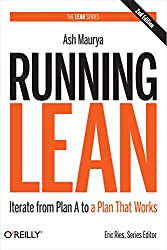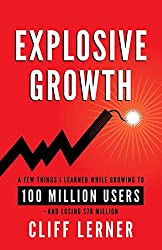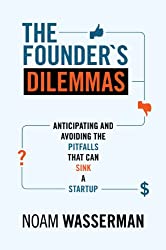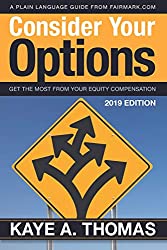
Rating: 8.0/10.
Running Lean: Iterate from Plan A to a Plan That Works by Ash Maurya
Guide on early stages of a startup, recommended by Hussein Fazal (CEO of Snaptravel). Many new founders assume building a startup is the same as building a product, but in reality, you are building a business model, with the product as only one component. At the center of the startup equation is the “Unique Value Proposition”: what problem are you solving for your customer better than the alternatives?
A startup’s life can be separated into two parts: before and after achieving product-market fit. Before PMF, your goal is to learn as much as possible about your customer base with iterative experiments. After PMF, your goal is to scale; this is a good time to start raising investment. During the iteration stage, you should aim to do the minimum possible to validate or refute a hypothesis about the customer; any more (like nice-to-have features or worrying about scalability) is wasteful.
A good way to learn about your customers is to interview them directly. Do about 50 of these interviews to validate your hypotheses about customer problems, collect information about the relative importance of their pain points, and how they are solving them currently. The initial demo should look real and use real-looking data, but without all the functionality. At this stage, interview your users again, gather information about which features are the most important, and test your price point.
The MVP should do the minimum to deliver on the unique value proposition, and nothing else; also, charge for it as soon as possible. The landing page should have a clear call to action (sign up), and you should have metrics on each step of the acquisition funnel to know where users are dropping off. Target a niche segment of early adopters at first, and aim for 80% of them to make it all the way through the funnel and convert to paying users.
A good sign you’ve reached PMF is if at least 40% of your users would be very disappointed if your product disappeared. Retention is the most important metric to optimize for at this stage, since it represents “stickiness”, whereas revenue is not as important.
Overall, this book gives a solid and concrete set of recommendations. It’s cold and unemotional but probably gives you a good chance of success if you follow it. The author is very opinionated: while his advice is likely valid, there are alternative paths forward — for example, he dislikes freemium models and advocates charging users as soon as possible, but many successful startups have a freemium or ad-based revenue model. It is sort of implied that your product is B2C, at least all the examples come from B2C and there isn’t any discussion about B2B-specific concerns. Finally, the author really likes using his “Lean Canvas” diagram (appearing about 30 times in the book): it’s supposed to show how each topic fits into the big picture of a startup, but gets quite repetitive.



